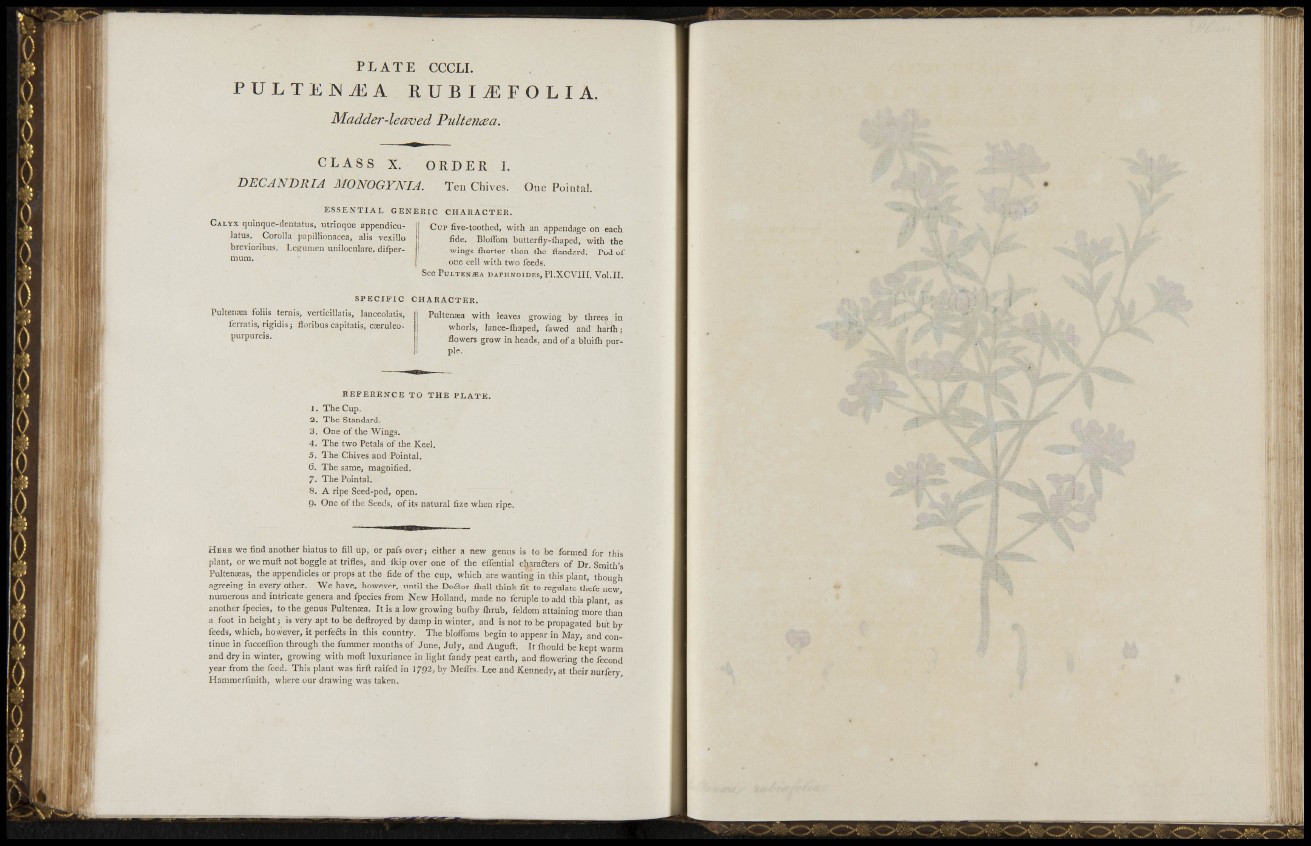
i ii
mr
P L A T E CCCLL
P U L T E N J i A RUBI^FOLIA.
Madder-leaved Pultencea.
C L A S S X. ORDER I.
DECANDRIA MONOGYJYIA. Teu Chives. One Puintal.
E S S E N T I A L GENERIC CHAKACTEK.
CALYX quinque-dentatiis, utrinque appeiidiculatus.
Corolla papilHonacea, alls vexillo
brevioribus. Legunien uniloculare, difpernium.
CUP five-toothed, with an appendage on each
fide. Bloirom butlerfly-fliaped, with the
•wings iliorter tlian the flandard. Pod of
one cell with two feeds.
See PuLTENffiA DAPHN0iDEr.,RI.XC\AII. Vol.11.
S P E C I B ' I C CHARACTER.
Pultensea foliis ternis, verticillatis, lanceolatis,
ferratis, rigidis ; floribus capitatis, casruleopurpureis.
Pultenaea with leaves growing by threes in
whorls, lance-lliaped, fawed and harfli;
flowers grow in headi!, and of a bluifli purple.
E E P E R E N C E TO THE PLATE.
1. The Cup.
2. The Standard.
3. One of the Wings.
4. The two Petals of the Keel.
5. The Chives and Pointal.
6. The same, magnified.
7. The Pointal.
S. A ripe Seed-pod, open.
Q. One of the Seeds, of its natural fize when ripe.
i ' 1
HERE we find another hiatus to fill up, or pafs over; either a new genus is to be formed for this
plant, or we muft not boggle at trifles, and Ikip over one of the eifential charaaers of Dr. Smith's
Pultenasas, the appendicles or props at the fide of the cup, which are wanting in this plant, though
agreeing in every other. We have, however, until the Dodor fliall think fit to regulate thefe new,
numerous and intricate genera and fpecies from New Holland, made no fcruple to add this plant, as
another fpecies, to the genus Pultenasa. It is a low growing bufhy flirub, feldom attaining more than
a foot in height ; is very apt to be deftroyed by damp in winter, and is not to be propagated but by
feeds, which, however, it perfefts in this country. The bloifoms begin to appear in May, and continue
in fucceffion through the fummer months of June, July, and Auguft. It fliould be kept warm
and dry in winter, growing with moft luxuriance in light fandy peat earth, and flowering the fécond
year from the feed. This plant was firft raifed in 1702, by MeiTrs. I,ee and Kennedy, at their nurfery,
Hammerfmith, where our drawing was taken.
r ;
Î. i
1
f